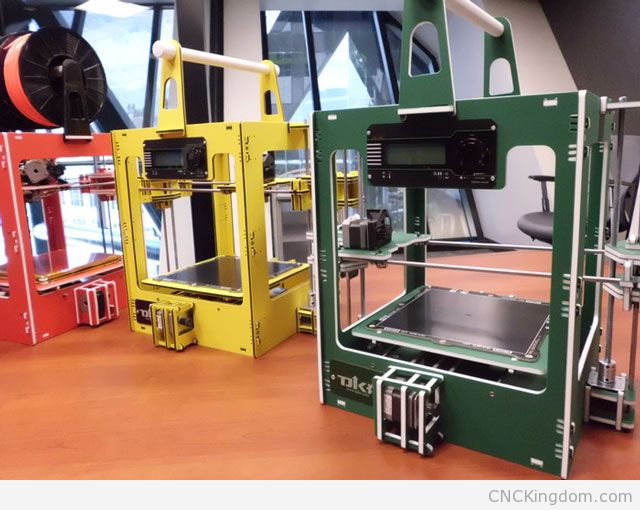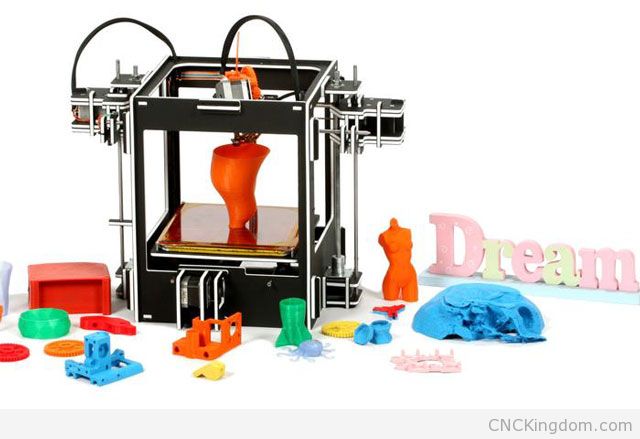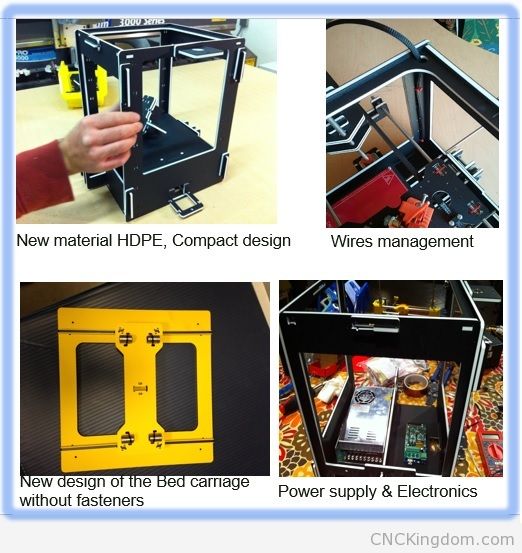Luc Nikiema of Snap 3D Printer by TJIKO Labs (USA)
Luc has a unique concept in the 3D printing world… have a machine that just snaps together instead of needing adhesives to put it all together! He’s running a Kickstarter campaign which you can read more about here:
http://www.kickstarter.com/projects/1970256921/the-snap3d-printer
I strongly encourage you to watch the video as well… it helps put everything into focus – having a 3D printer, I know both the fun and pain involved with designing for and building with them… by going the “snap 3D printer” route, I think he’s found a great solution for ultimate portability and power.
Where did your interest in engineering and entrepreneurship come from? My parents run a translation company (French English) and although I almost flunked out of my entrepreneurship class in University while doing a double degree in biology and geography, I managed to teach myself how to build things for CNC machines and how to market them on my own time. Are these classes thus far providing you with value or is much of what you learned dated already?
I was good in Math and Physics and anything with numbers at school. And naturally like many people I continue to learn and to develop these skills by going to Scientific Preparatory School in France and an Engineering school.
I love design, I like to create and I like to collaborate with creative people. Innovators, Inventors and Entrepreneurs have always been a inspirational source for me. They can really improve people life, improve our society and why not change the world.

Where did the concept behind a “snap together” 3D printer come from with your Snap 3D Printer?
There was something missing in 3d printers design back in 2011 that with one of my collaborator we wanted to address.
I wanted the design a printer that will decrease this big gap between technical background users and people who can not build a 3d printer.
Secondly, I am originally from Africa and I know there is a big problem to find component to build a 3D printer. So I wanted a product that anybody in the world will be able to assemble.
Lastly, I wanted the printer to look elegant to be attractive not a barbarian machine on my desktop with bunch of metallic parts and fasteners etc.

Knowing what I wanted and what problem I wanted to solve, my collaborator came with a first prototype. Then the adventure started and keep improve it. Also integrating feedback from early early users.
So now we have a printer that any kid, older, or non technical background user can build. it also keep the spirit of learning new skills and satisfaction of building your own product.
It’s really important to keep giving to users the possibility to learn the technology that will bring more innovation and blossom new creators and inventors.
3D printers users are creating parts, products, prototypes. Assembling or building a 3D printer should be something fun for them to do or learn.
I interviewed Philippe Guglielmetti, CEO of Zeepro (http://cncking.com/interview-philippe-guglielmetti-ceo-zeepro/) and I have to ask you the same question I asked him. What makes you think that you even have a chance competing in the 3D printing marketplace against Stratasys and 3D System’s offerings?
I am not one of their major competitor. They are too big corporation (haha:). But other companies can become their competitor. I think there is room for innovation in 3D printing. Some experts are projecting a rapid market grow. There is a room for manufacturers if they keep innovating.

I also noticed your filament isn’t protected from the environment, how do you resolve issues with the plastic drying-up and snapping over time? I’ve had this happen once already with my 3D Systems Cube and everything is in cartridges except one of the plastic feeds got dislodged and after a few weeks, the plastic dried out.
User can easily insert and remove the plastic filament and store it in their protected filament inventory. Insert and remove the plastic filament from the spool holder or the Extruder is very easy to do.
We wanted to add a design to cover the it but we thought that plastic manufacturers are better suit to solve this issue. Also filament come from different weight and manufacturers.
What are some of the advantages to a design that snaps together rather than one solid unit like all your competitors offer? Are there any disadvantages to this approach?
I think that if you check back the 3 points this design is solving you will see all the advantages of it.
- Not soldering
- No technical background
- All ages
- Reduce adoption barrier
- With no fasteners for the frame and no special tools required to assemble it, this printer can find it users in area where it is difficult to purchase components.
- It’s less than 2 hours to build
- Build volume is big 8x8x8
- Support ABS (of course PLA too)
- A better bed to avoid warping
- Modular design: advanced users can update components. i.e Bed, Electronics, Extruders, Nozzle.
- Different color frame
- Elegant looking
- LED light
- LCD control panel for stand alone
- … many more that I guess users will find
Disadvantages:
- Manufacturing: the CNC router is just too expensive. We are working to reduce the costs.

I’m heavily biased with PLA for my 3D printer, it’s such a wonderful material to work with as it’s less prone to warp, seems to print better with less errors and is 100% biodegradable. Although I understand the purpose of using ABS for certain applications, I’m clueless regarding nylon’s properties, can you share some of the advantages to building using this material?
You are right. We wanted to show that this printer print with PLA, this is not a problem. But other printers can not print ABS. So we just show it. I didn’t use a lot of Nylon. We had a plastic manufacturer who sent us sample long time ago and we were able to print. I guess for the Nylon part you will have to check with people who really use it and need it.
Looking at your build, it looks like everything is laser cut initially then moved onto CNC routers – can you share with me the design process behind building and optimizing your files and what was involved with “converting” your files to be cut efficiently using CNC router from laser? What makes high-density polyethylene a better material than your original plywood design?
In fact it’s not the manufacturing process that made us change from wood to CNC. It’s the other way.
Laser cut is cheap and faster obviously this is what we want. But the new material can melt. So CNC router, water jet and stamping are some alternative solutions. We can use CNC router or water jet. We didn’t try Stamping because it required an expensive “die” to make. This is start up, a small company it’s a solution that I will definitely explore in the future to reduce costs. It was really a pain to convert those file to CNC. So worked with shops here to get it done.
The HDPE was enough stronger and has this little flexibility that we need for our clips parts. Wood (Temperature, humidity), ABS (hard to bend), Plexiglass were not good choice for this design. Now our clips and all the frame are really strong and nothing losing. That make the HDPE the right choice for this design and it offer many colors.

How long does it take to build a Snap 3D Printer if you have zero mechanical or technical skills and how fast are you able to build one by comparison yourself knowing this machine so well? What are some of the tricky parts with the assembly?
From my perspective I can build one in less than 1hour. For someone who will have to learn and follow the steps it will be less than 2 hours. Because there is really nothing to make the user just have to put the pieces where they need to go following instructions. We will have the wires pre-made.
Be sure to visit the Kickstarter campaign at:
http://www.kickstarter.com/projects/1970256921/the-snap3d-printer
